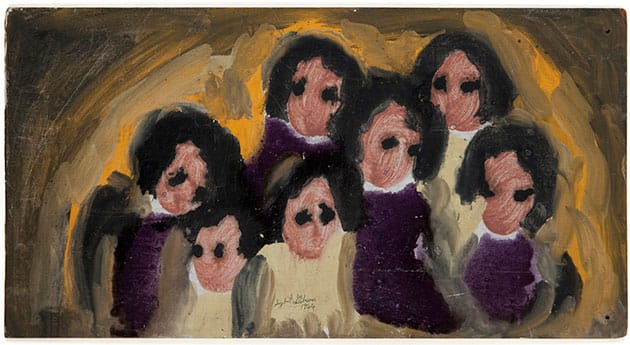It’s All in Your Head
It begins as a dull ache, then the skull becomes hot and brittle, then the neck stiffens—and then there’s no escaping a migraine. A search for relief, temporary or otherwise.

Joan Didion is perhaps the world’s most famous migraine sufferer of letters. In The White Album, she wrote about the “migraine personality,” which can be synonymous with perfectionism. This was when she lived in California, which seems like a nice place to have migraines. I imagine her, wan and weak, curled up on a platform bed, a silk eye mask appliqued to her face, a jade plant ever so elegantly resting on her nightstand, the Pacific rolling in the distance. Somewhere, a whale sang for its mate.
I also get, as Joan calls them, “migraine.” For the best chance of relief, experts say, the migraine is to be detected before it starts. This has only revealed to me that my mind cannot read my own mind, or that I’m a hapless optimist—I hope each migraine will be my last, even though each one is only the beginning of another. I can never be sure if a skipped breakfast or a bumped head will set my neurons skitting about in their dance of agony.
Joan doesn’t get into such uncouth medical areas as migraine “triggers,” but mine are endless: computer and cell phone screens, headphones, hats, the smoke from halal carts, fried food, fatty food, spicy food, food, not eating, chocolate, caffeine, angora, cats, alcohol, books, the internet, tech journalism, music, Sephora, and basically all of New York City above Canal St. It’s a trick to keep my head from exploding on an average day.
The left side, or sometimes the right side, of my forehead starts to cave in on itself. My left eye is closed; tears dribble out of it. It feels like it’s about to burst out of its socket. For relief, I take my hand and press down on my eyeball.
The pain from a migraine usually comes on gradually: at first just a dull ache, then a hot, brittle feeling in the skull, a stiffening of the neck. (At this point I should reach for the triptans, a migraine-specific painkiller, but they’re precious. Each pill costs about $9, with insurance. They can also cause more migraines. I take two Aleve instead. It never works.) Soon, my vision is clouded by something that looks like the Focus Features logo. And then we are in business: The left side, or sometimes the right side, of my forehead starts to cave in on itself. The pressure: I am getting crushed! My left eye is closed; tears dribble out of it. It feels like it’s about to burst out of its socket. For relief, I take my hand and press down on my eyeball. It’s crude, but it works, if momentarily. Ah yes, the old eyeball massage—a cure for the ages.
This goes on for a few hours. A triptan helps, usually to revert back to the hot-ache stage and stay constant there for a relatively cool 72 hours until relief comes, an airplane rising above clouds.
I’ve had migraines since I was a teenager. My mother has them too. Benevolent as she is, she started sharing her triptans with me upon my first symptoms. We became drug buddies: “Hey Ma, send me more of that stuff, will ya?” I would say, “Sure, how much do ya want?” she’d reply. For some reason we adopted accents only when talking of our headache pills.
Recently, as my migraines worsened, I went on what I like to call my “cerebral walkabout.” In the immortal words of Nancy Kerrigan, I wanted to find out “Why me?” What is wrong with my brain, for it to hurt like this so often? Why me, Tonya? I put my mind through a lot, I know, but I thought we had come to some kind of homeostatic agreement upon the onset of my mid-twenties.
First, my doctor and I wanted to rule out any pathological diseases. So I had an MRI, which was a fun and scientific hour that I got to spend in a magnetic tube wearing a seersucker robe and being perfectly still. The procedure yielded a picture of what my neurologist called an “unremarkable brain” (thanks!). Interestingly, though, she said my brain was scarred by headaches past—fairly normal for migraine sufferers, if not completely horrifying.
Then we decided to try a new drug called Topamax. Curiously, this drug is used for three separate things: epilepsy, migraines, and weight loss. It also has some curious side effects, the most jarring one being the loss of any ability to detect carbonation. It also creates intense thirst, making the former side effect profoundly sad when all one wants is a 32-oz Diet Coke. And it makes your fingers very cold, and you also forget what hunger feels like. My good friend says it makes me act like Auntie Mame.
Evidently, if you take Topamax every day, your headaches will disappear, like boats drifting down a river into the sunset. It’s been two weeks. I still have headaches. I type this from my bed, my screen at half its brightness potential. I think back to a recent trip to the dentist. “One of my teeth feels really weird,” I told her. “It feels like it’s going to fall out. But maybe it’s all in my head.”
“Well, your teeth are all in your head,” she said.
